The story of Orientalism art, cinema and literature threads through history like silk spliced with copper wire. Seductive in its sheen, tensile in its purpose. Rooted in imperialism, colonialism and Othering.
When Napoleon’s engineers first sketched a half‑ruined minaret beside a howitzer blueprint, they did so much more than record a scene. They drafted the first storyboard for a wholesale uptake of empire. At home and abroad.
Across the nineteenth century, Western painters, novelists, and mapmakers built a travelling theatre labeled 'the East.' On its stage: saffron sunsets, tiled courtyards, camel silhouettes, ambergris smoke. Offstage: ledgers calculating cotton tonnage, conscription quotas, canal tolls. The tableau replayed in salon after salon: rational West strides on in full daylight; irrational Orient lingers in perfumed dusk, awaiting supervision or salvation.
Each 'exotic' detail carried a hidden tariff. To praise a desert caravan for its timeless rhythm was, implicitly, to indict it for lacking a timetable—and thus to clear moral space for outsiders to lay tracks. Even admiration became annexation in fancy dress.
Edward Said would later expose the stage mechanics, showing how knowledge production—philology, ethnography, landscape art—aligned with shipping lanes and joint‑stock timetables. His revelation gave future critics the backstage pass, yet the spectacle persists, flickering from Gérôme’s varnished canvases to algorithmic search prompts.
The task now is not only to critique but to recast, to widen the spotlight so quarantined voices can rewrite the script.
Key Takeaways
-
Power dynamics and representation: Orientalism isn’t just an artistic style—it’s a power structure that allowed Western writers and artists to define the East in stereotypical ways, often justifying colonial control under the guise of 'civilizing' supposedly backward lands.
-
Persistent stereotypes: Depictions of the East as exotic, erotic, or dangerously mystical—whether in 19th-century paintings, literature, or modern cinema—reinforced false binaries: rational West vs. irrational East.
-
Edward Said’s critique: Said’s 1978 book Orientalism exposed how these Western-created images functioned as a cultural tool of imperialism, prompting art historians and literary scholars to re-evaluate classic works with a focus on their hidden biases.
-
Contemporary reclamations: Modern artists from the Middle East, Asia, and North Africa—such as Lalla Essaydi and Shirin Neshat—actively challenge Orientalist tropes by reclaiming their own narratives, emphasizing authentic agency and voice.
-
Future perspectives: Today, Orientalism endures not just in films and museums but also in AI algorithms trained on biased data. Greater awareness and diverse contributions can help break these cycles and foster a more inclusive view of cultural representation.
Orientalist Theory: Power Plays and Stereotypes
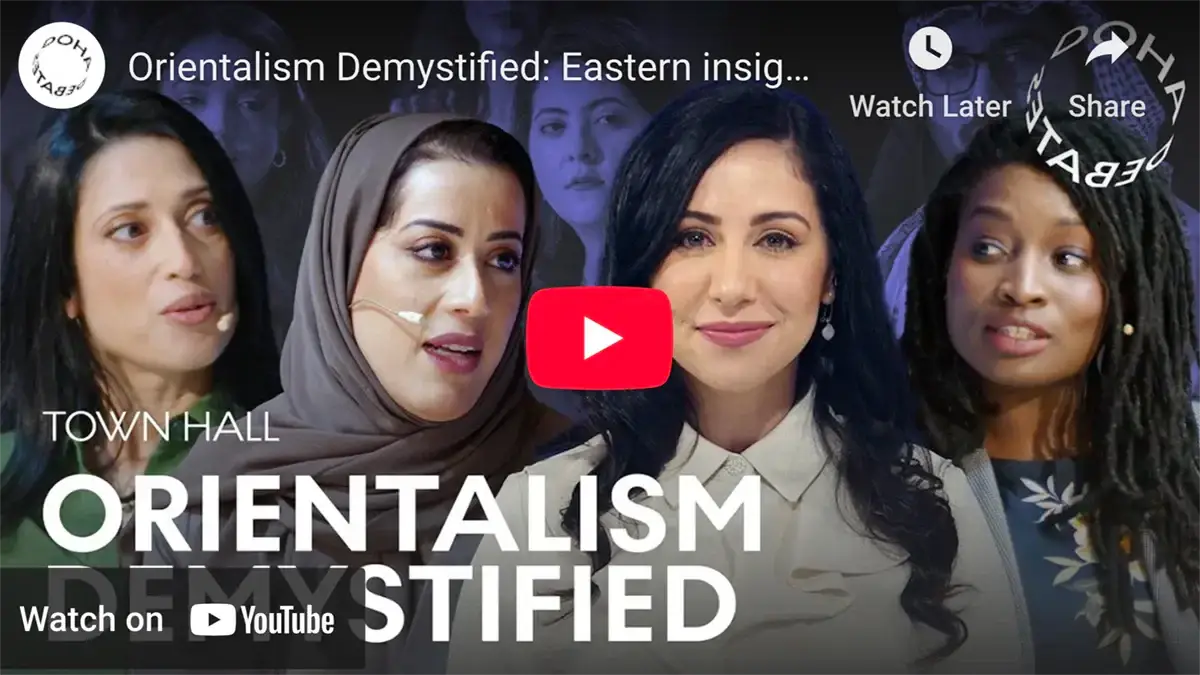 Orientalism materialised during the steam‑powered century, when British gunboats and French scholarship cruised the same tide‑lines. Painters, philologists, and bureaucrats distilled a polyglot swath of territories—from Tangier’s docks to Tokyo Bay—into a single theatrical backdrop. They populated it with minaret silhouettes, labyrinthine souks, and meditative sages who conveniently stayed still while Europe strode forward. Save for the occasional cannon or telegraph pole (symbols of 'progress' delivered by outsiders), time inside the frame appeared frozen in fragrant antiquity.
Orientalism materialised during the steam‑powered century, when British gunboats and French scholarship cruised the same tide‑lines. Painters, philologists, and bureaucrats distilled a polyglot swath of territories—from Tangier’s docks to Tokyo Bay—into a single theatrical backdrop. They populated it with minaret silhouettes, labyrinthine souks, and meditative sages who conveniently stayed still while Europe strode forward. Save for the occasional cannon or telegraph pole (symbols of 'progress' delivered by outsiders), time inside the frame appeared frozen in fragrant antiquity.
That aesthetic freeze served policy well. By depicting cultures as beautiful yet inert, Western powers cast their expansion as humanitarian duty. A new railway in India was sold not only as trade artery but as moral spine; irrigation canals in Egypt doubled as painterly motifs and evidence of civic uplift. Orientalism thus yoked the artist’s brush to the surveyor’s chain. If Damascus could be flattened into a caption—'timeless bazaar of spice and vice'—then tariff hikes or punitive treaties seemed corrective, not coercive.
Crucially, these images did not need to lie outright; selective emphasis did the work. A Moroccan scholar’s printing press spinning Enlightenment treatises drew less pictorial interest than a snake‑charmer in torch‑lit courtyard. Factory whistles in Alexandria rarely echoed through Western travelogues, though the same writers would chronicle every call to prayer as evidence of unchanging devotion. Over decades, the cumulative collage formed a mental map: Orient as luscious museum, West as restless architect.
The theory’s grip tightened via repetition. Textile designers copied tile motifs lifted from Holy Land sketches; ballet directors choreographed 'Arabian' divertissements on Paris boards; children leafed through adventure annuals where bearded villains schemed in incense clouds. Each echo helped convert trope into 'tradition.' Even missionaries who protested colonial violence often accepted Orientalist axioms, preaching salvation to people portrayed as passive avatars of superstition rather than dynamic historical actors.
Where Power Meets Perception
Orientalist Theory: Power Plays and Stereotypes
Photography, lithography, and world‑fair panoramas industrialised the gaze. Suddenly, an armchair reader in Manchester could flip through stereographs of 'Cairo Street' at Chicago’s 1893 World’s Columbian Exposition, peering at staged bazaars manned by costumed Syrians on temporary visas. The image felt empirical—silver nitrate, not oil paint—yet the frame still cropped out the show’s payroll, the script, and the ticket price. Perception, mass‑produced, became policy’s softest weapon.
Museums sealed the contract. Skulls labeled 'Nubian type,' ceramic shards, and Qur’anic manuscripts appeared in glass coffers beside daggers and hookahs, implicitly ordering cultures along an evolutionary staircase that culminated in the viewer’s own reflection. Academic journals annotated those artefacts with taxonomies that mimicked biology, as if belief systems were fossils pinned in strata. Through such displays, visitors practised the habit of classification, exiting the gallery confident that knowing the exhibit’s label granted mastery over the living people outside its frame.
Power’s most effective trick, however, lay in normalising the one‑way window. The West looked East and narrated; the East, by design, could not look back in equal measure. Even travel writers praised for their empathy often rendered locals as quotable backdrops, translating dialect into quaint moral lessons for home consumption. When the speaking subject is always the visitor and never the visited, the visited become indefinitely divisible—into ethnic type, religious emblem, market curiosity—while the visitor’s perspective blooms into universal standard.
Thus, perception itself turned infrastructural. Railroads and telegraph lines moved troops and tariffs; illustrated magazines moved fantasies and fears. Both networks fed the same imperial engine, lubricated by the assumption that vision flows West‑to‑East like sunbeams. By the dawn of the twentieth century, this optic regime felt so natural that few paused to ask who threaded the camera’s shutter or who might wish to photograph in return.
Splitting the Binary Further
If the first binary cast West as reason and East as reverie, the follow‑up subdivides identities with the precision of a taxonomist pinning butterflies. Gender becomes the sharpest scalpel. Within the harem tableau, women drift between two poles: languid ornament or silenced sufferer. Both roles serve the same storyline—objects of desire or rescue, never authors of desire or dissent. Veils, once practical garments or symbols of status, mutate into metonyms for passivity, screens onto which Western fantasy can be rear‑projected.
Men, meanwhile, bifurcate into the feral and the feeble. On one canvas a crimson‑turbaned assassin glints beneath a scimitar; on the next, a portly qadi dozes amid paperwork—proof that tyranny and torpor can coexist in a single caricature. The unspoken coda: either way, local governance is suspect, demanding external correction. Such dual caricatures also discipline Western masculinity by contrast—our hero remains logical, temperate, self‑mastered—qualities validated precisely because the 'Other' lacks them.
Linda Nochlin’s critical pry‑bar exposes a further fissure: temporal petrification. In Gérôme’s The Snake Charmer, tiles gleam, bodies lounge, a boy performs—the perfect postcard. Yet no date intrudes, no factory whistle calls shift, no political pamphlet flutters underfoot. Time stalls so thoroughly that one could revisit the same scene a century later without encountering change. This stillness is ideological mortar: if a culture appears motionless, colonial acceleration feels merciful, even obligatory.
Here Orientalism’s cruelty is most intimate. It does not merely misdescribe; it confiscates futurity. A society pictured outside history is denied the right to imagine tomorrow on its own terms. Thus, the binary is not a line but a cage—beautiful, ornate, door always ajar for the tourist, never for the resident.
Orientalism’s Colonial Foundations
Stereotype alone cannot seize territory; it must couple with structure. Enter the colonial foundation, poured from equal parts vision, violence, and ledger. Vision: maps tinged pink proclaim a civilising arc across deserts and deltas. Violence: gunboats idle on emerald harbours, artillery schools open beside language institutes. Ledger: tariffs indexed to tonnage, indemnities amortised over decades, museum looting logged as 'protective custody.'
Art, reportage, and bureaucracy braid tightly here. Consider Gros’s Bonaparte Visiting the Plague Victims of Jaffa—a tableau of antiseptic heroism. Napoleon touches bubonic sores with saintly calm, luminous as Caravaggio’s saints. Off‑canvas, his quartermasters requisition grain, his officers draft surrender terms. The painting tours Europe, soothing fears about imperial overreach: see, our general heals. Policy follows paint; approval ratings rise; the next expedition receives funding.
Or take the British Illustrated London News layout from 1882: left page, a chaotic Cairo marketplace 'before occupation'; right page, a newly widened boulevard 'under modern management.' Ink becomes argument; engraving becomes evidence; annexation becomes hygiene. In countless salons and reading rooms, such juxtapositions hard‑bake the idea that European control is public health for the geopolitical body.
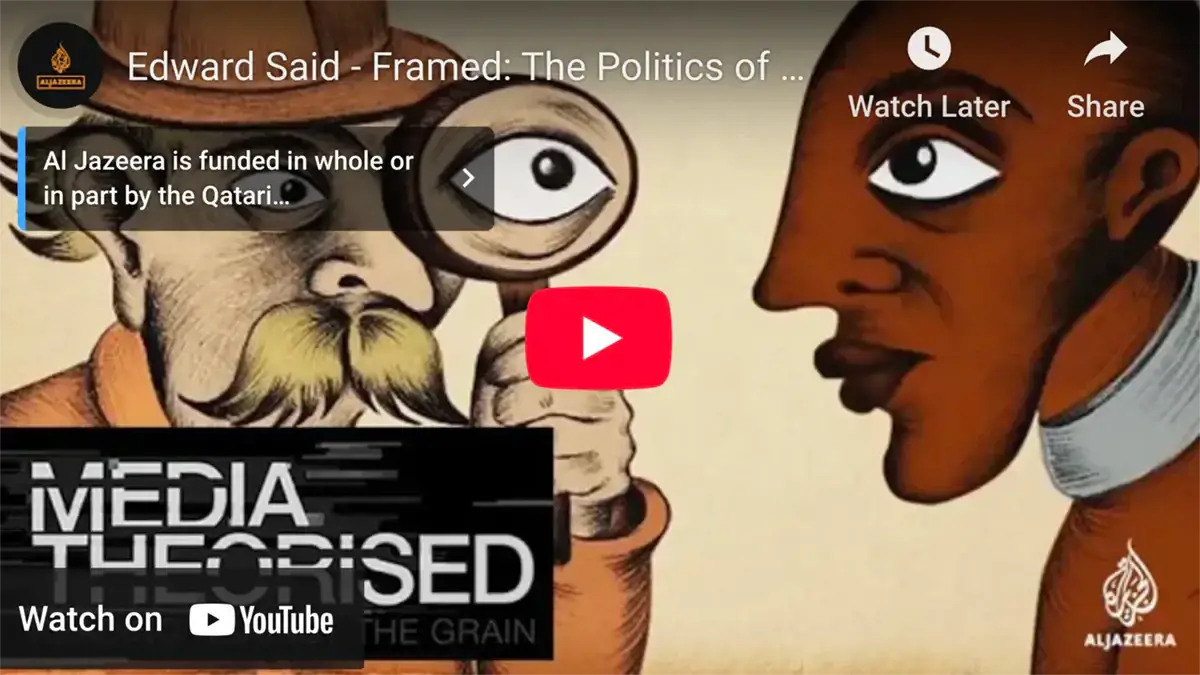 The colonial foundation is also linguistic. Descriptors like 'static,' 'decadent,' 'medieval' pepper memos from consuls to crown, converting qualitative sneers into quantitative policy: higher customs duties 'to spur industry,' missionary schools 'to brighten intellect,' rail concessions 'to animate lethargic trade.' Language does the initial clearing; gunpowder only confirms the deed.
The colonial foundation is also linguistic. Descriptors like 'static,' 'decadent,' 'medieval' pepper memos from consuls to crown, converting qualitative sneers into quantitative policy: higher customs duties 'to spur industry,' missionary schools 'to brighten intellect,' rail concessions 'to animate lethargic trade.' Language does the initial clearing; gunpowder only confirms the deed.
Finally, the foundation extends underground into academia. Endowed chairs in Oriental languages bloom at the same pace as telegraph lines linking outposts to capitals. Professors consult for foreign offices, students graduate into consular posts, dissertations morph into handbooks for infantry captains learning which shrine routes to avoid on march day. Knowledge, extracted under the banner of curiosity, cycles back as ordinance and ordinance maps. Thus colonial infrastructure is epistemic before it is material; the railbed follows the grammar book.
By century’s end, the edifice stands complete: galleries furnishing the moral vision, newspapers drumming logistical tempo, parliaments voting credit lines, armies anchoring reality on the ground. Art and empire no longer merely converse; they finish each other’s sentences. Orientalism, once a costume drama, has become poured concrete—difficult to excise, even when flags change, because the worldview that justified conquest has already been installed in school curricula, museum basements, and popular imagination.
Intellectual Bombshell: Edward Said on Cultural Imperialism
 Through much of modern Western discourse, Orientalist images circulated unchallenged, accepted as documentary even when spun from rumor. That equilibrium shattered in 1978 when Edward Said’s Orientalism detonated like a charge set beneath the archive. Said traced the genealogy of seemingly benign scholarship—lexicons, travelogues, Biblical geographies—and revealed the relay wiring between library shelf and naval dock. European empires, he argued, manufactured an 'Orient' that was irrational, passive, and static precisely to justify a complementary 'Occident' that was rational, active, and destined to rule. If only the West could speak about the East, it soon presumed the right to speak for it.
Through much of modern Western discourse, Orientalist images circulated unchallenged, accepted as documentary even when spun from rumor. That equilibrium shattered in 1978 when Edward Said’s Orientalism detonated like a charge set beneath the archive. Said traced the genealogy of seemingly benign scholarship—lexicons, travelogues, Biblical geographies—and revealed the relay wiring between library shelf and naval dock. European empires, he argued, manufactured an 'Orient' that was irrational, passive, and static precisely to justify a complementary 'Occident' that was rational, active, and destined to rule. If only the West could speak about the East, it soon presumed the right to speak for it.
Said’s provocation reframed Orientalism as a system of cultural imperialism—one that survived regime change because it lodged inside university syllabi, museum catalogs, and canonical anthologies. He coined a critical method: read not merely what a text says about the East, but what it needs the East to be in order for the West to recognise itself. This mirror logic turned the tables: Orientalist artefacts became evidence of Western insecurity, not Eastern essence.
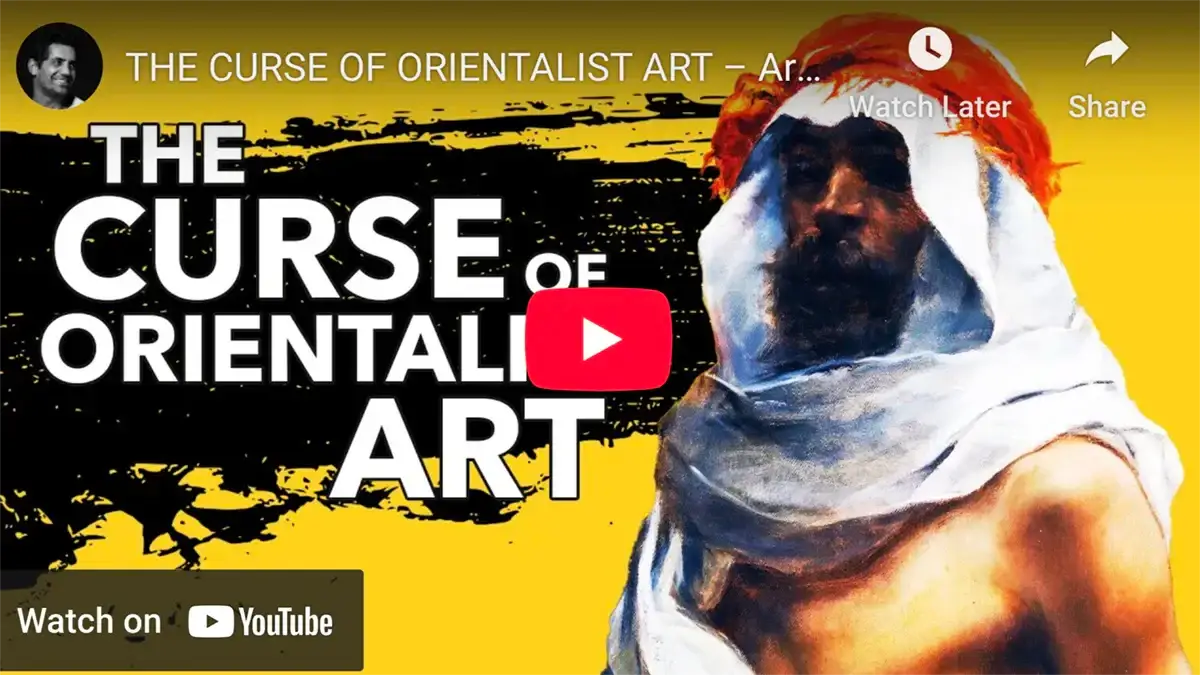 Shockwaves Through Art
Shockwaves Through Art
Said’s book dropped into art history like a dye packet in clear water. Paintings once admired for technical polish now revealed power diagrams. Jean‑Léon Gérôme’s The Snake Charmer—for decades a poster child of 'authentic Oriental genre'—was re‑inspected by Linda Nochlin in her 1983 essay 'The Imaginary Orient.' She noted the voyeuristic aperture, the absence of colonial officials lurking just outside the archway, the way time appears suspended so Western spectators can linger without consequence. Technique suddenly looked complicit, every glinting tile a rehearsed alibi.
Curators followed suit. Wall labels sprouted new metadata: orientalism paintings couple with dates of occupation, export routes and donor backgrounds. Loan agreements demanded fuller provenance for carpets and manuscripts acquired under 'expeditionary' conditions. Graduate students built seminars around negative space—what imperial canvases excluded: sewage strikes, feminist tracts, telegraph tariffs. Connoisseurship expanded into forensics. The discipline discovered that a flawless glaze can mask a broken context.
Film and literature departments picked up the tremor. Classics like Lawrence of Arabia or Kipling’s Kim were screened beside post‑colonial critiques. Discussion shifted from narrative thrill to narrative license: who frames whom, who narrates silence, who profits from the geography of cliché. The 'Orient' began to dissolve into plural 'Orients,' each demanding its own syntax, temporal rhythm, and political weather.
Tidal Wave of Influence: History of Orientalism in Art
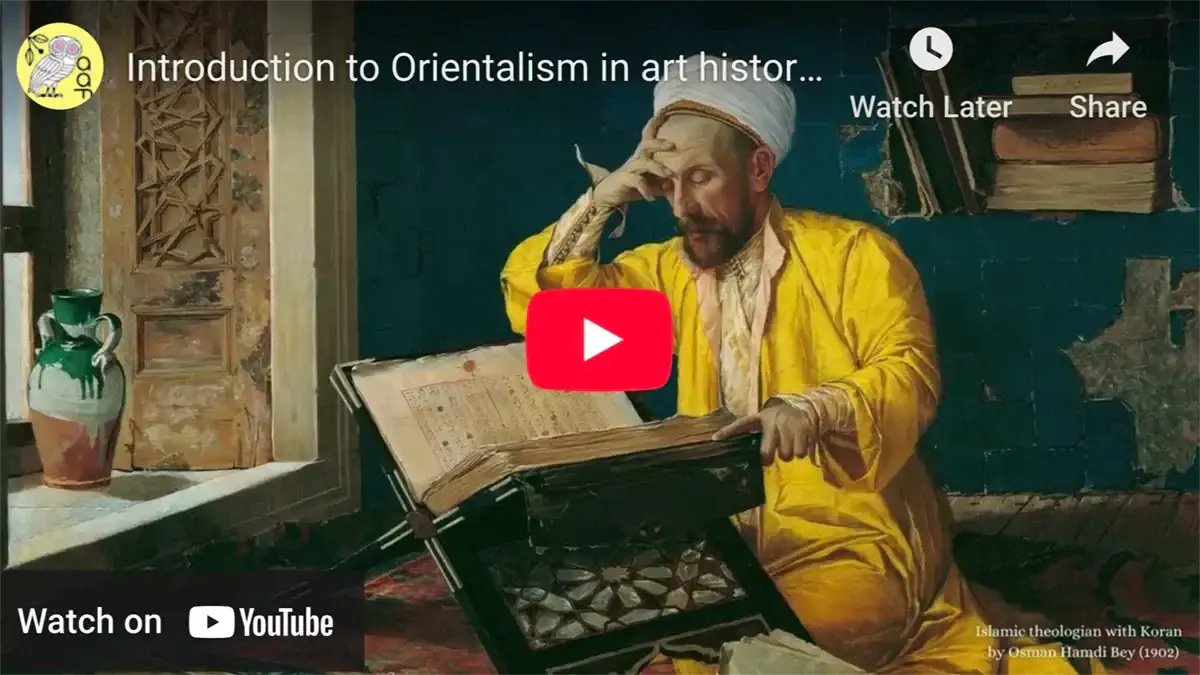 While critique surged, historians still had to map how the original images spread with tsunami speed during the Romantic and Academic eras. From 1820 to 1900, European empires ballooned across Asia and Africa, and with them grew a market hungry for souvenirs of conquest. Artists responded with orientalism paintings at an almost industrial scale. Delacroix returned from North Africa with sketchbooks ablaze; Frederic Leighton, who never reached Damascus, built Syrian fantasies from studio props; Ingres combined archival engravings with Florentine nudes to birth languid odalisques.
While critique surged, historians still had to map how the original images spread with tsunami speed during the Romantic and Academic eras. From 1820 to 1900, European empires ballooned across Asia and Africa, and with them grew a market hungry for souvenirs of conquest. Artists responded with orientalism paintings at an almost industrial scale. Delacroix returned from North Africa with sketchbooks ablaze; Frederic Leighton, who never reached Damascus, built Syrian fantasies from studio props; Ingres combined archival engravings with Florentine nudes to birth languid odalisques.
Patrons adored the colour and 'accuracy' of the orientalism art movement. Salon crowds marvelled at Gérôme’s enamelled detail: a horse’s sweat, a brass bowl’s dent. Accuracy, however, camouflaged staging. Props sourced from Paris curio shops, models hired from Montparnasse circuses, backdrops copied from Ottoman postcards—each ingredient passed as eyewitness truth because the painting’s surface left no brushstroke to chance. Trust the detail, ignore the blueprint. Thus artworks became portable viceroys, persuading spectators that empire brought them closer to reality even as romantic orientalism art filtered life through imported pigments and fetishised imagination.
Travelling exhibitions magnified reach. A canvas crated to Boston inspired magazine engravings in Chicago, which in turn decorated soap tins in Kansas City. Within a decade, domestic parlours displayed 'Algiers stripe' drapes, and children’s board games featured camel tokens crossing 'Sahara squares.' Orientalist iconography metastasised into design language—chandeliers mimicked mosque lamps, fountain pens bore crescent clips—embedding empire into everyday gesture.
Common Themes
Across the map of orientalism in art three motifs bloomed most often. Repeating like an endless summer designed to entice and hypnotise:
-
Exoticism (Elsewhere as Sensory Overload). Glittering piles of pomegranates, brass censers, and patterned textiles crowd the canvas, inviting Western eyes to graze without obligation.
-
Eroticism (Elsewhere as Forbidden Pleasure). Semi‑nude odalisques recline behind diaphanous scrims, promising illicit intimacy buffered by geographical distance.
-
Mysticism (Elsewhere as Esoteric Spectacle). Fakirs pierce cheeks with skewers; dervishes spin until motion blurs into aura. Romantic orientalism art featured scenes that flatten complex devotional practices into pictorial pyrotechnics. Crafted like guilty pleasures for imperial curiosity.
Reproduced on wallpaper, cigarette cards, and later Technicolor film, these themes hardened into atmospheric shorthand for the orientalism art movement. By 1910, a single hookah silhouette on a theatre poster could signal an entire emotional palette: languor, risk, erotic suspense. Audiences didn’t need subtitles; the code was already installed.
Fantasy x Propaganda
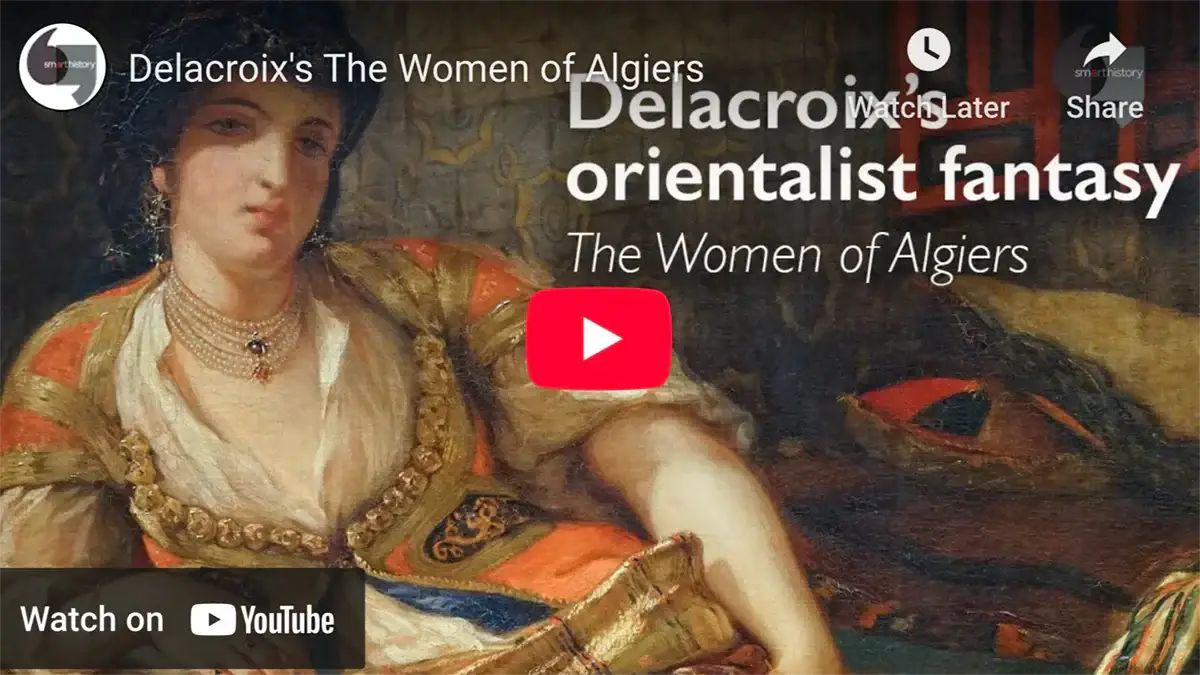 Even as some orientalism painting indulged in dreamy idylls—like Delacroix’s Women of Algiers (1834) or Ingres’s The Turkish Bath (1862)—a parallel current aligned with colonial propaganda. The earliest Orientalist paintings in the 19th century were shaped by events such as Napoleon’s invasion of Egypt (1798), in which art served to document the 'strange' land while affirming France’s moral and physical dominance.
Even as some orientalism painting indulged in dreamy idylls—like Delacroix’s Women of Algiers (1834) or Ingres’s The Turkish Bath (1862)—a parallel current aligned with colonial propaganda. The earliest Orientalist paintings in the 19th century were shaped by events such as Napoleon’s invasion of Egypt (1798), in which art served to document the 'strange' land while affirming France’s moral and physical dominance.
 Consider Antoine‑Jean Gros’s Bonaparte Visiting the Plague Victims of Jaffa. Napoleon stands haloed in dust‑filtered light, touching lesions with bare hand—miraculous in an era terrified of contagion. The tableau rewrites invasion as hospital round. Newspapers reproduced engravings; pamphlets extolled French hygiene; funding for further campaigns sailed through the Assembly.
Consider Antoine‑Jean Gros’s Bonaparte Visiting the Plague Victims of Jaffa. Napoleon stands haloed in dust‑filtered light, touching lesions with bare hand—miraculous in an era terrified of contagion. The tableau rewrites invasion as hospital round. Newspapers reproduced engravings; pamphlets extolled French hygiene; funding for further campaigns sailed through the Assembly.
War reportage, too, borrowed Orientalist palette. When British forces bombarded Alexandria in 1882, illustrated weeklies framed the skyline in orange‑red flames that echoed salon depictions of 'Oriental chaos.' The connection felt intuitive: the city already lived in popular imagination as occult maze; gunfire merely lit the lamp. Policy needed no footnote; the picture sufficed.
Arguments for 'civilising missions' thus piggy‑backed on fantasy imagery. If the bazaar was eternal disorder, municipal by‑laws could masquerade as humanity’s gift. If the pasha was capricious despot, foreign advisors could invoice as moral accountants. Art became a case file; beauty did bureaucratic labour.
In each instance, the fantasy of the East as dangerously enchanting justified the propaganda of West as necessarily corrective. The canvas of an orientalism painting supplied the mood music. Treaty supplied the bass line. Together they scored the long march of empire—visible, audible, persuasive.
From Europe to America
While Europe painted, engraved, and curated the Orient, the United States—emerging from its own continental conquest—watched with acquisitive curiosity. American collectors touring Paris salons snapped up Gérôme panels as conversation trophies; East Coast merchants ordered 'Damascus stripe' upholstery to signal cosmopolitan taste. Yet U.S. artists soon moved from importers to producers, translating European Orientalism into a New‑World accent that fused Yankee bravado with inherited myth.
John Singer Sargent serves as emblem. Celebrated for patrician portraits, he made a Moroccan detour in 1879–80, returning with sketches that birthed Fumée d’ambre gris (1880). A veiled woman tends aromatic smoke, her half‑lit profile suspended between sanctity and seduction—every bit the Gérôme trope, yet glazed with Sargent’s loose luminosity. Critics at Boston’s St. Botolph Club swooned at the 'authentic rite,' ignoring that ambergris was an Atlantic whaler’s commodity, not an eternal Moorish incense. Sargent’s hybrid style confirmed that one need not witness empire’s machinery to aestheticise its imagery; a Grand Tour, a prop box, and salon approval sufficed.
Across the continent, Frederic Church—hero of the Hudson River School—inserted Syrian ruins into panoramic canvases otherwise devoted to Andean volcanoes and Newfoundland icebergs. For U.S. audiences, the juxtaposition framed the Orient as fellow sublime frontier: a landscape awaiting scientific survey, mineral assay, and missionary tract. Meanwhile, world’s fairs from Philadelphia (1876) to St. Louis (1904) erected 'Cairo Streets' where visitors rode donkey loops past papier‑mâché minarets, rehearsing imperial pilgrimage without crossing an ocean.
Thus, American Orientalism paintings paralleled territorial expansion into the Pacific and Caribbean. As U.S. naval squadrons steamed toward Manila and Samoa, department stores in Chicago advertised 'Sultan’s Tent' furniture sets. Visual appetite softened the ground for geopolitical appetite, proving Orientalism portable, franchisable, and profitable on new shorelines.
Orientalism in Literature
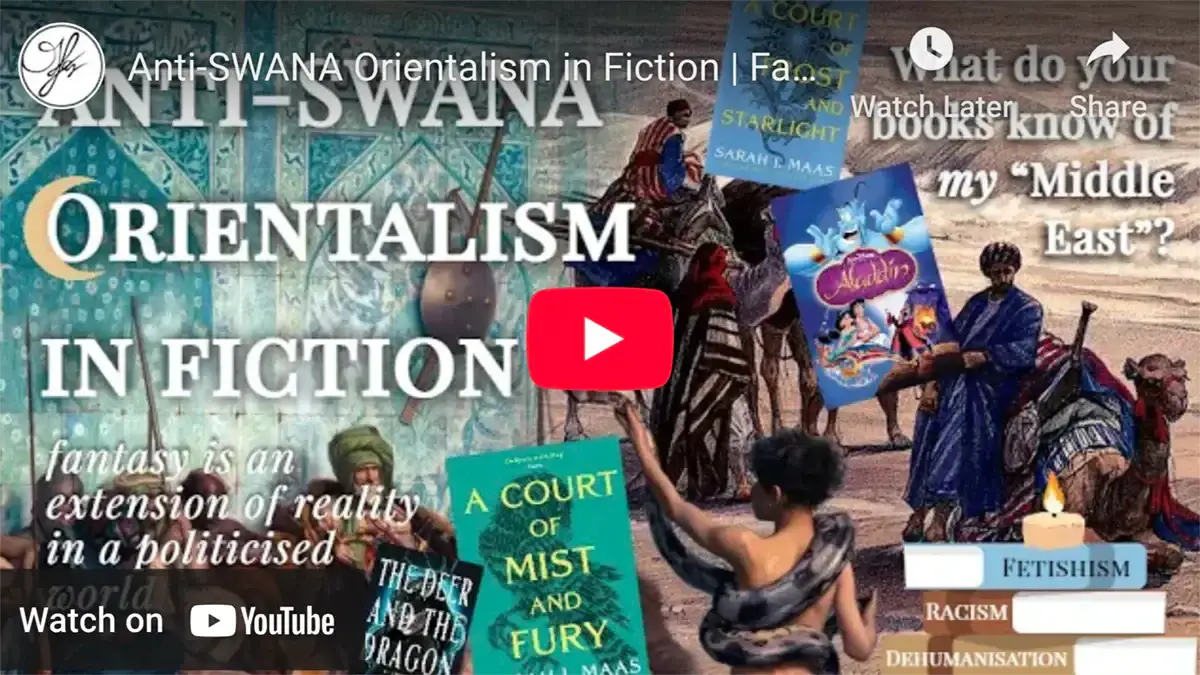 If canvases supplied colour plates, novels, poems, and travelogues furnished narrative chassis. Nineteenth‑century writers, from Pierre Loti to Pierre FitzGerald, laced pages with jealous eunuchs, hashish dreams, and ruin‑lit moonlight. But literature’s deeper labor was rhetorical: converting distant territory into moral parable for home consumption.
If canvases supplied colour plates, novels, poems, and travelogues furnished narrative chassis. Nineteenth‑century writers, from Pierre Loti to Pierre FitzGerald, laced pages with jealous eunuchs, hashish dreams, and ruin‑lit moonlight. But literature’s deeper labor was rhetorical: converting distant territory into moral parable for home consumption.
Take Gustave Flaubert’s Egyptian diaries, where dancer Kuchuk Hanem appears as mute vessel for European projection—her real voice erased beneath authorial flourish. The episode travelled back to Paris salons, validating the trope of Eastern woman as both voluptuous and void. Victorian readers inhaled such passages as field reports, rarely questioning the selective translation or staged encounter.
Rudyard Kipling weaponised the idiom more overtly. His 1899 poem 'The White Man’s Burden' framed colonised peoples as 'half‑devil and half‑child,' recasting imperial extraction as paternal chore. Verse became policy pamphlet, quoted in congressional debates over the Philippines. Likewise, H. Rider Haggard’s lost‑world adventures or Sax Rohmer’s Fu Manchu thrillers fed pulp presses with fiendish sultans and diabolical mandarins, teaching mass audiences to conflate geopolitical anxiety with lurid cliff‑hanger.
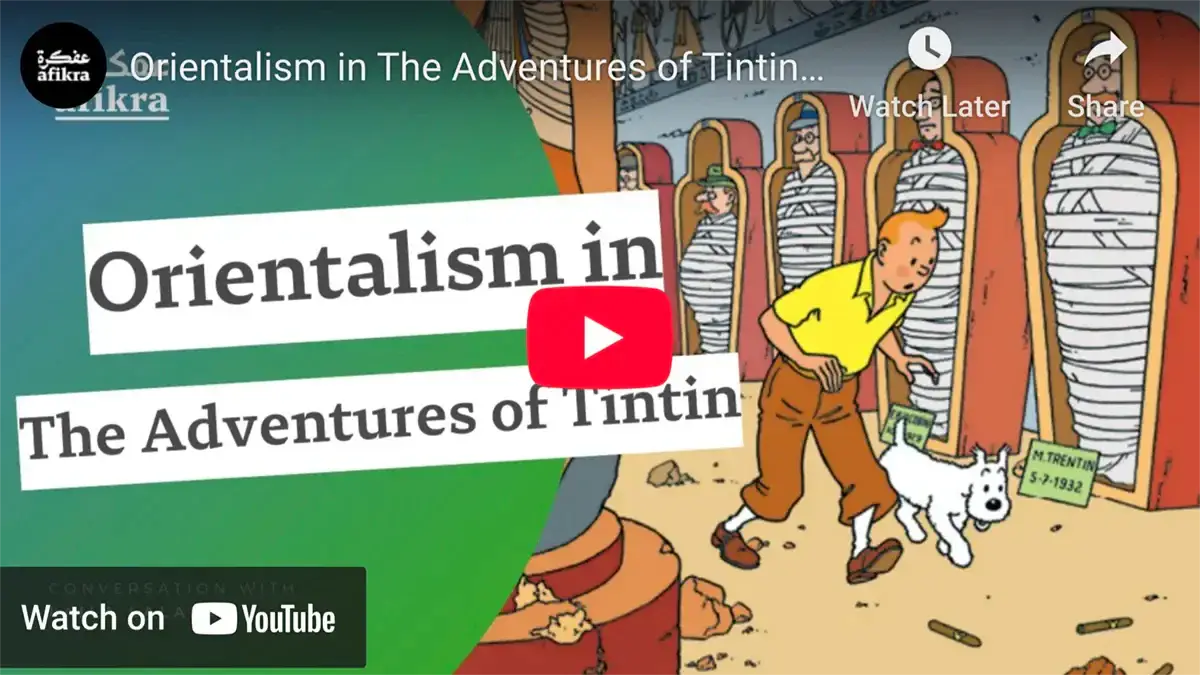
Even avant‑gardists joined the chorus. The Symbolists mined Persian quatrains for opium‑tinged melancholy, while Ezra Pound’s Cathay transplanted Chinese lyric into imagist English stripped of historical syntax. Appropriation masqueraded as homage, turning translation into a one‑way siphon: flow of aesthetic capital Westward, flow of interpretive authority likewise.
A similar pattern appears in the mid-20th-century Tintin graphic novels by Belgian artist Georges Remi (Hergé), which remain beloved adventure stories for countless children yet often rely on reductive portrayals of non-Western peoples and places. While Tintin himself travels the globe solving mysteries, his foreign hosts become little more than caricatures, presented through an exoticizing, sometimes condescending lens. In particular, the series’ depictions of Arab or African cultures render local characters as either overly simplistic sidekicks or comic foils, never fully realized subjects with their own voices.
Orientalism in Cinema
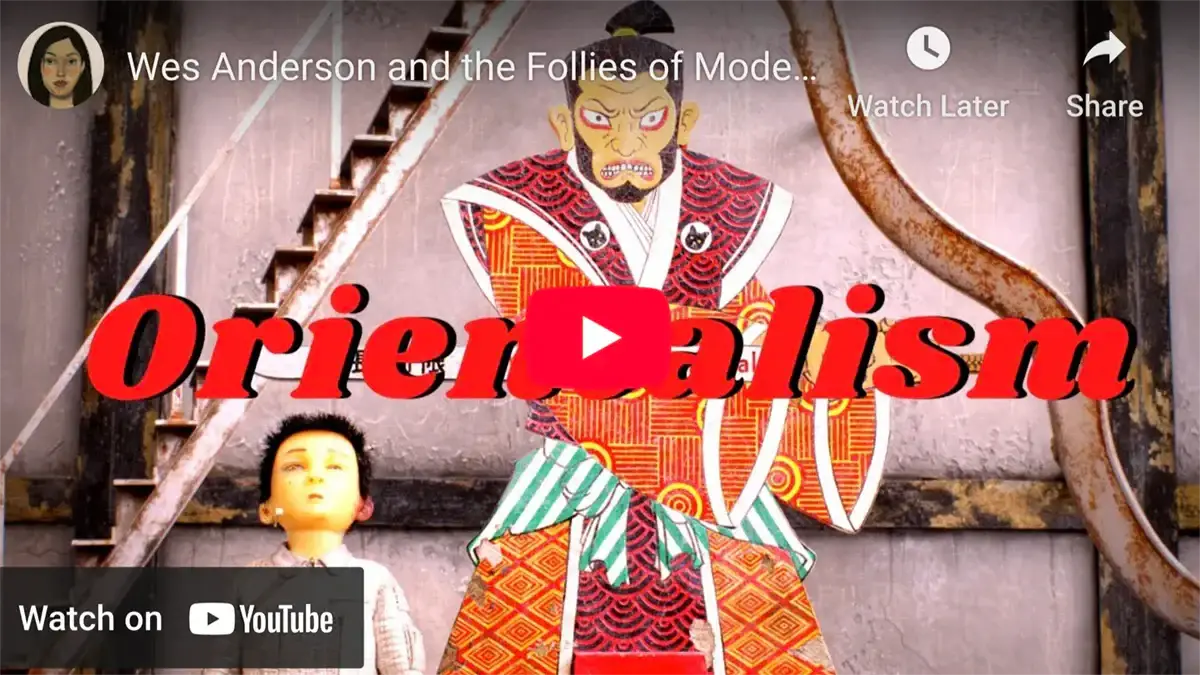 The twentieth century introduced motion picture—the perfect amplifier for entrenched tropes. There are too many examples of orientalism in movies to count, but Hollywood’s silent blockbuster The Sheik (1921) stands out . Casting Rudolph Valentino as brooding desert prince whose kidnapping of a British heiress oscillates between peril and peach‑fuzz romance. Reviewers praised 'Oriental magnetism,' box‑office receipts soared, and a generation equated Arab identity with velvet tents and predatory charm.
The twentieth century introduced motion picture—the perfect amplifier for entrenched tropes. There are too many examples of orientalism in movies to count, but Hollywood’s silent blockbuster The Sheik (1921) stands out . Casting Rudolph Valentino as brooding desert prince whose kidnapping of a British heiress oscillates between peril and peach‑fuzz romance. Reviewers praised 'Oriental magnetism,' box‑office receipts soared, and a generation equated Arab identity with velvet tents and predatory charm.
By 1962, David Lean’s Lawrence of Arabia elevated the equation or orientalist stereotypes into panoramic myth. Cinemascope dunes dwarfing camel columns filmed through a British hero’s binoculars. Arab factions rendered noble but fragmented, needing T. E. Lawrence’s charisma to cohere. Critics lauded cinematography, few probed the frame’s colonial vantage—British officer as narrative fulcrum, Bedouin fighters as backdrop to his existential crisis. The desert spoke in English epigrams.
Orientalism in film carried on throughout the 20th Century. The adventure template just migrated to bigger screens and popcorn franchises. Indiana Jones (1981–89) turned Cairo into bazaar obstacle course where fez‑topped goons brandished scimitars against the whip‑smart archaeologist. And that's just one scene in one of the films. Humour masked hierarchy throughout, with local characters comic, expendable, anonymous. While the Western professor remained ingenious in every scene. Indispensable. Trademarked, even. Toy lines recirculated the image, embedding scimitar‑man into children’s playrooms.
Post‑9/11 thrillers recalibrated tone but not paradigm. Orientalism in movies like True Lies and American Sniper pitched Middle Eastern villains as existential threats. Swapping turbans for tactical vests but retaining the core binary. Western rationality foiling Eastern fanaticism time and again. Even arthouse auteurs sometimes stumbled. Wes Anderson’s Isle of Dogs (2018) filtered Japan through pastel diorama. Its native characters relegated to subtitles beneath canine protagonists voiced in Californian drawl.
Cinema’s power rests on sensory saturation: orchestral swell, panoramic sweep, close‑up tremor. When those tools deploy Orientalist shorthand, stereotype enters the nervous system at 24 frames per second, harder to excise than a misquoted footnote. Hence ongoing battles over casting, dubbing, and authorship: who writes the script, who frames the shot, who gets the reaction close‑up? Each decision diluting a century‑old tincture of orientalism in film or distilling it anew.
Japonisme and Its Influence on Western Art
 Gunboat diplomacy forced Japan’s ports ajar in the 1850s; by the 1860s ukiyo‑e prints were sailing back to Marseilles tea‑chests and London bookstalls. Those woodblocks—Hokusai’s cyan waves, Hiroshige’s snowfall, Kuniyoshi’s tattooed heroes—hit Europe like an atmospheric front, flattening perspective, bleaching shadows, inverting compositional gravity. For painters choked by Academic orthodoxy, Japan appeared an oxygen tank: proof that a picture could vibrate without vanishing points or chiaroscuro ballast.
Gunboat diplomacy forced Japan’s ports ajar in the 1850s; by the 1860s ukiyo‑e prints were sailing back to Marseilles tea‑chests and London bookstalls. Those woodblocks—Hokusai’s cyan waves, Hiroshige’s snowfall, Kuniyoshi’s tattooed heroes—hit Europe like an atmospheric front, flattening perspective, bleaching shadows, inverting compositional gravity. For painters choked by Academic orthodoxy, Japan appeared an oxygen tank: proof that a picture could vibrate without vanishing points or chiaroscuro ballast.
Monet hung prints floor‑to‑ceiling in Giverny, repaying the debt by planting water‑gardens that mimic Hiroshige bridges; Van Gogh bordered sunflowers with indigo outlines cribbed from One Hundred Famous Views of Edo; Whistler’s Nocturnes blurred Thames fog into sumi‑ink wash. Art Nouveau’s whiplash curves owe as much to kimono sleeves as to Celtic manuscripts. In interiors, 'Japan rooms' sprouted bamboo screens beside coal grates; in fashion, kimono collars spliced onto Paris bodices; in typography, the sinuous Japonaiserie font slithered across cabaret posters.
Yet this aesthetic liberation concealed asymmetry. Collectors prized a chrysanthemum motif but ignored Meiji‑era textile mills roaring behind Kyoto shrines. The carved netsuke on a banker’s mantel said 'timeless craftsmanship,' not 'unequal treaty.' Thus Japonisme shared Orientalism’s tilt: extracting style while dimming context, romanticising a culture precisely by crop‐editing its industrial present.
Cousin of Orientalism
Japonisme’s family resemblance to Orientalism lies in selective vision plus power gradient. While Japonisme lacked the overt military occupation that shadowed Algeria or India, it still filtered Japan through pre‑set lenses: tea ceremony serenity, samurai honour, geisha grace. European modernists projected their own nostalgia for pre‑industrial harmony onto woodblock horizons they believed unspoiled by smokestacks—never mind that Japan simultaneously imported railways, telegraphs, and Prussian constitutional models.
Western magazines praised 'childlike Japanese spirit,' flattening a modernising nation into pastoral vignette. Scholars classified kimono dyes under 'folk art,' ignoring patent filings from Osaka chemical labs. Even compliments carried condescension: a Times critic in 1895 dubbed Japan 'the decorative conscience of mankind,' implying moral depth resided in Europe while Japan distilled pretty surfaces. Thus Japonisme perpetuated exotic distance, cushioning appropriation with praise.
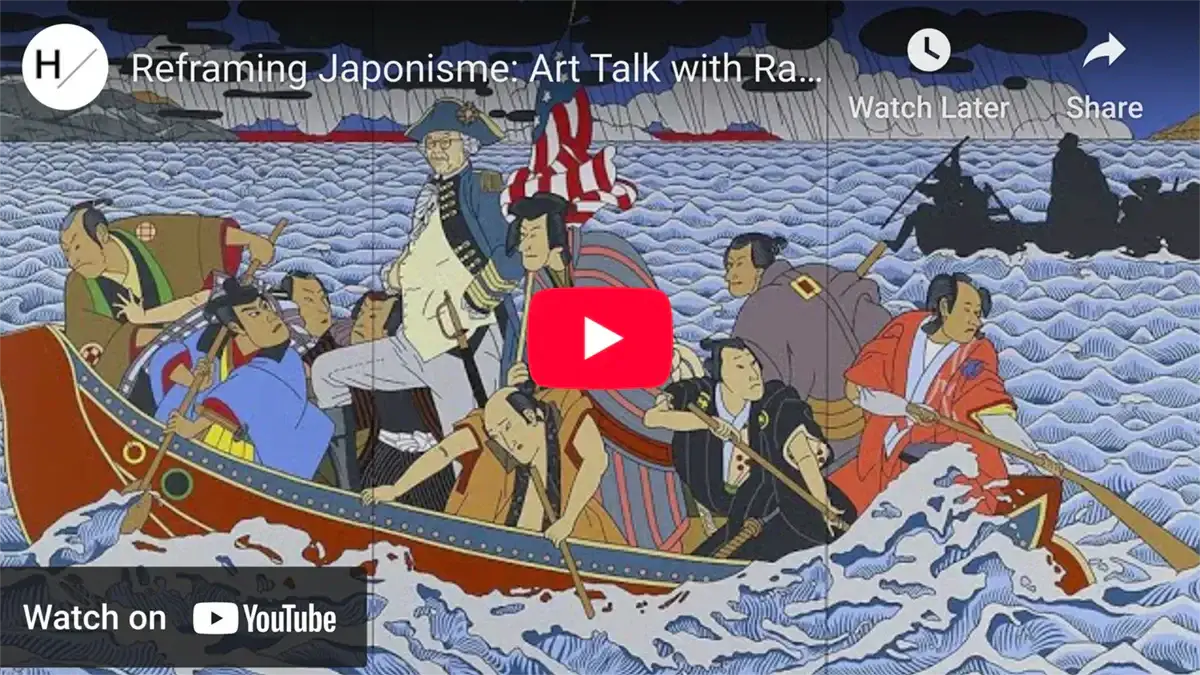 Inspiring and Problematic
Inspiring and Problematic
Artistic pay‑off was undeniable. Breaking Renaissance perspective freed European painters from linear tyranny; studies of asymmetry sparked new graphic design; architects like Frank Lloyd Wright layered screens and voids echoing shōji panels. Cross‑pollination enriched global vocabulary. Yet the exchange taxed Japan unevenly: curio dealers controlled export quotas; duties favoured European middlemen; the prints that astonished Van Gogh often originated as cheap ephemera farmers once used to wrap fish.
Moreover, Western hunger for 'pure Japan' sometimes spurred local artisans to freeze craft lines for tourist demand, stalling natural evolution. When markets reward typecasting, makers may self‑orientalise to survive. Thus, even positive fascination can fossilise culture, reinforcing the notion that authenticity equals stasis.
Reframing Orientalism in Contemporary Art
By the late twentieth century, globalisation flipped the script on orientalism art. Artists from regions once framed as tableaux seized examples of orientalism and remixed them through their own lens, redirecting the gaze in ways that only they could. No longer silent muses, they became directors, set designers, and lead actors—sometimes quoting Orientalist iconography verbatim, other times glitching it beyond recognition.
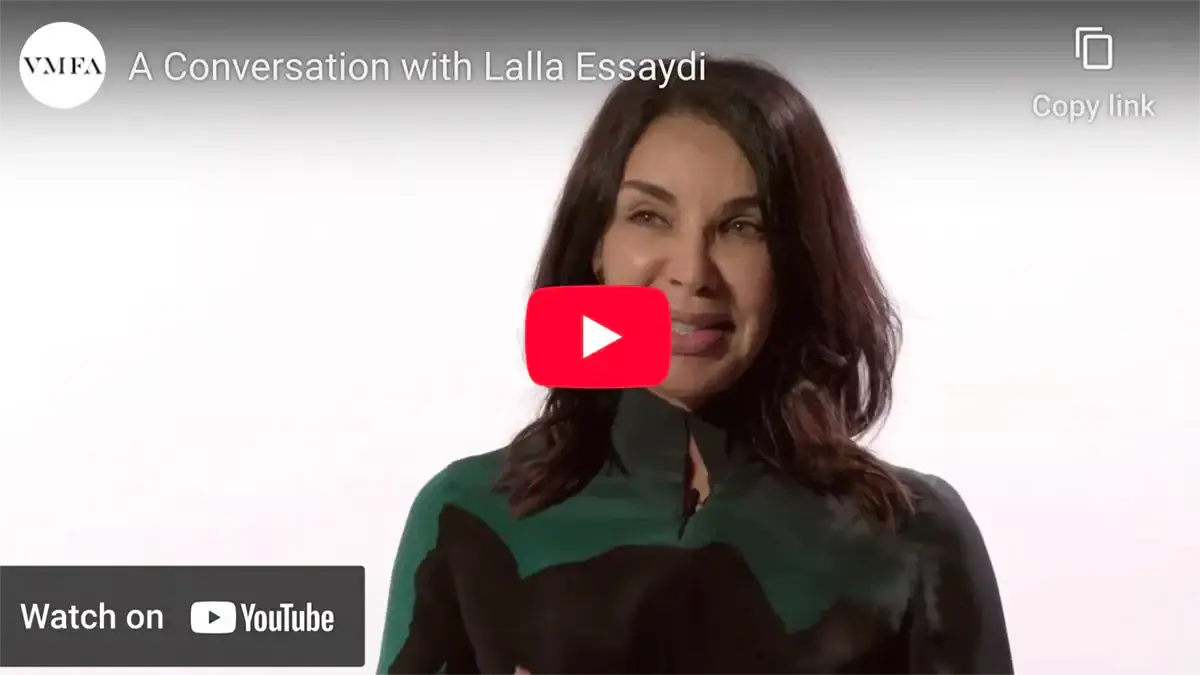 Lalla Essaydi
Lalla Essaydi
One powerful approach has been for artists to revisit classic Orientalist scenes and reimagine them from an Eastern perspective. Like Moroccan-born photographer Lalla Essaydi created a series called Les Femmes du Maroc in the 2000s, in which she stages Moroccan women in poses reminiscent of 19th-century harem paintings.
Essaydi’s women are not passive odalisques; they gaze back confidently, and their skin and garments are covered with Arabic calligraphy (applied by the artist using henna). This calligraphy – often excerpts of women’s writings – is indecipherable to outsiders but asserts the presence of the women’s own voices and stories. By doing this, Essaydi quite literally writes back into the image the agency that Orientalist painters had erased. Her photographs are beautiful and decorative on the surface, as Orientalist art was, but upon closer look they dismantle the old fantasy.
The women are clearly collaborators in Essaydi’s art, not silent subjects; the setting (often a real Moroccan interior) has none of the overly staged opulence of a Victorian painting but instead an authentic domestic feel. Essaydi’s work, and that of others like her, effectively flips the script: the exotic harem becomes a space where real women assert their identity, not one where Western imaginations roam free.
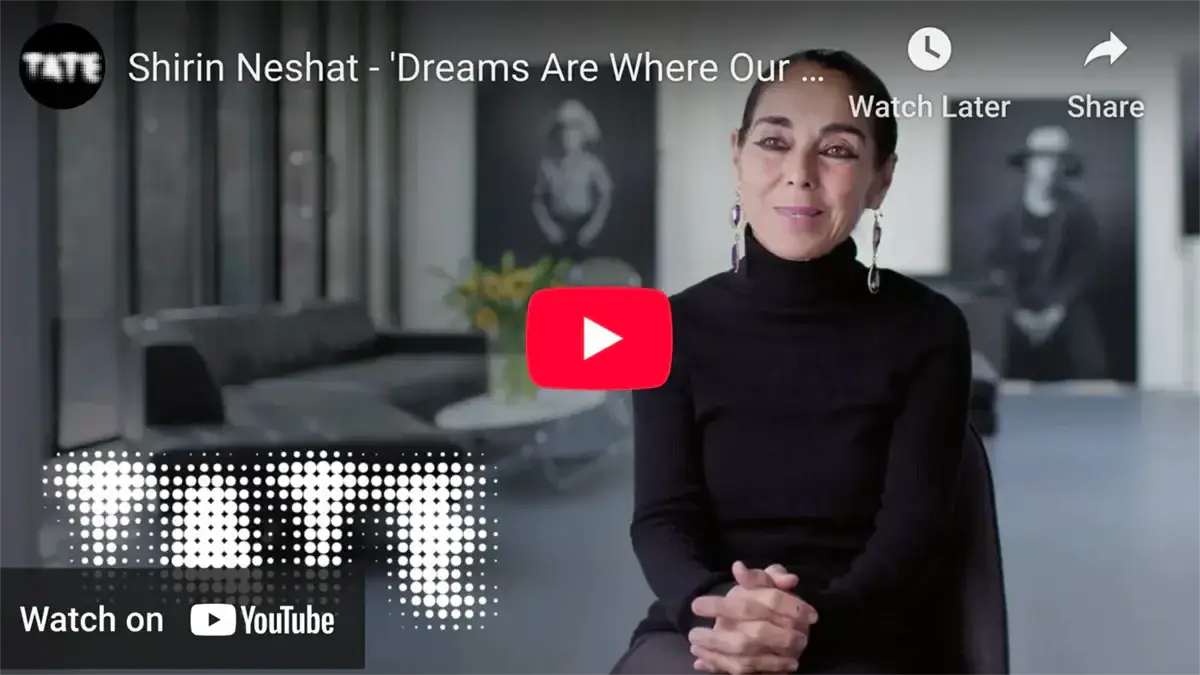 Shirin Neshat
Shirin Neshat
Another renowned artist, Shirin Neshat from Iran, addresses Orientalist and post-Orientalist narratives through photography and film. Neshat’s iconic series Women of Allah features striking black-and-white images of Iranian women (often Neshat herself) cloaked in the black chador, holding weapons, with Farsi poetry inscribed on the photographs. These works confront Western preconceptions head-on: the Western viewer, accustomed to seeing veiled Muslim women as either oppressed victims or faceless threats, is met with a direct, even defiant gaze.
Neshat’s images are layered with Iranian historical context (the poetry, the references to the Iran–Iraq war and the Iranian Revolution) that force viewers to acknowledge there is an inner voice and story to these women beyond the Western narrative of veils and violence. By appropriating the visual language that Western media often uses (veils, guns, calligraphy), but infusing it with personal and political meaning, Neshat challenges the stereotype from the inside out. It is as if she’s saying: we are not voiceless; you just haven’t been listening. Her films like Women Without Men also provide nuanced portrayals of Middle Eastern women’s lives, in stark contrast to flat Orientalist characterizations.
Contemporary art is full of such acts of reclamation. Artists with heritage in formerly colonized or 'Orientalized' countries often use their art to dismantle the old stereotypes. They do so by humanizing the subjects that were once exoticized, and by injecting elements of real life and contemporary culture that Orientalism ignored.
 Youssef Nabil
Youssef Nabil
Egyptian artist Youssef Nabil creates hand-colored photographs that nostalgically reference old Egyptian cinema and Orientalist imagery, yet his modern subjects and subtle alterations comment on the mix of East-West identity. In the realm of painting, artists like Ahmad Mater from Saudi Arabia or Shahzia Sikander (originally from Pakistan) incorporate traditional Islamic art forms and contemporary themes, creating a fusion that defies the old Orientalist paradigm. By showing the modern realities – be it urban life, political struggles, or personal narratives – of Eastern cultures, these artists break the illusion of the stagnant, storybook Orient.
Decolonizing the Visual Narrative
Across biennales from Sharjah to Jakarta, artists enact similar reclamations: VR installations of Mecca logistical circuits, street‑art calligraphy mutating into data glyphs, comic books where hijab‑wearing heroines hack satellites. Institutions respond—sometimes hesitantly—by foregrounding provenance, co‑curating with community advisers, and revisiting display taxonomies (no more 'Primitive Art' wings). Restitution debates move from back‑room diplomacy to headline news as Benin bronzes return and Khmer sculptures exit catalogue pages for airport tarmacs.
Decolonisation, in this sense, is less a reversal than a remodel: widening apertures, re‑wiring metadata, budgeting for translation, paying rent on intellectual property long assumed free. It recognises that narrative sovereignty is infrastructural—archival access, funding streams, algorithmic weightings—not merely moral.
AI Art’s Relationship to Orientalism
Enter the twenty‑first‑century wildcard: generative AI. Models train on billions of images, many drawn from colonial archives, film stills, and stock photos already laced with Orientalist bias. Prompt 'Middle Eastern marketplace,' and the algorithm often outputs minarets, camel caravans, and veiled women—even if contemporary Abu Dhabi skyline data sits in the same corpus. Scholars dub the glitch algorithmic Orientalism: bias in, bias remix, bias out at 8K resolution.
Studies (Abu‑Kishk et al., 2024) demonstrate three failure modes: cultural homogenisation (distinct cities flattened into generic 'Arab Street'), temporal drag (modern attire hallucinated into Ottoman garb), and narrative priming (model captions inserting 'chaos,' 'mystery,' 'exotic' unbidden). Developers now scramble to curate balanced datasets, flag stereotypes, and weight local creators higher in training loops. Decolonising the neural network proves as thorny as decolonising the museum—both require sovereignty over archives.
Artists also fight back creatively: Pakistani collective Ctrl‑Alt‑J feeds the model only Karachi traffic cams and Urdu tweets, forcing it to draft neon‑lit rickshaw scenes. Iranian coder‑poets fine‑tune GPT clones on women’s memoirs, generating polyphonic counter‑texts that drown out snake‑charm tropes. The tool becomes contested arena rather than predetermined fate.
Toward a More Inclusive Artistic Canon
From Romantic fantasies to digital hallucinations, representation has never been neutral décor. It's civic engineering for empathy, policy, and capital flow. Museums now annotate labels for orientalism art with colonial timelines; film festivals commission Gulf science fiction to shows us worlds far beyond orientalist stereotypes; AI ethics boards include Yoruba linguists because language is truth, narrative, history, being and becoming.
An inclusive canon does not merely add new shelves around orientalism art. It re‑shelves the room so no single aisle claims central heating. That means exhibiting Egyptian photographer X’s view of Cairo beside Gérôme’s, syllabus units pairing Kipling with post‑colonial satire, dataset governance that budgets for rural Bengali archives as scrupulously as Parisian photo houses. Plural vantage points convert the provisional into the dialogic, preventing any one frame from fossilising into fate.
This shift demands resources—translation grants, repatriation funds, server space—but it yields dividends: richer comprehension, sharper self‑critique, fewer algorithmic traps. Most of all, it grants future artists the right to envision their landscapes without dodging someone else’s vintage spotlight.
Reading List
- Jennifer Meagher, Orientalism in Nineteenth-Century Art. Heilbrunn Timeline of Art History, Metropolitan Museum of Art (2004).
- Edward Said, Orientalism. New York: Vintage Books (1979).
- Dr. Nancy Demerdash, Orientalism. Smarthistory (2015).
- Linda Nochlin, The Imaginary Orient. Art in America (1983).
- Susan Edwards, Rethinking Orientalism, Again. Getty (2010).
- Mahmut Özer, Artificial intelligence reinvents Orientalism for the digital age. Daily Sabah (2025).
- Abu-Kishk, Dahan, Garra, AI as the New Orientalism? MeitalConf (2024).
-
Nancy Demerdash, Orientalism. Melbourne Art Class (2022).
- Raha Rafii, 'How the Contemporary Art World Repackages Orientalism. Hyperallergic (2021).
- David Luhrssen, Revisiting Orientalism Through the Lives of Artists. Shepherd Express (2018).














